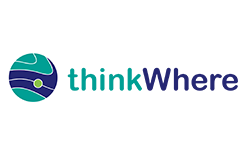thinkWhere is helping one of Scotland’s best known Highland estates create digital maps of land holdings using the latest web technology. Originally introduced for land registration, Atholl Estates is now using the open source software to create, store, analyse and share a wide range of map-related information. Applications of the mapping system include farming, habitat assessment and utilities and infrastructure management. Atholl Estates consists of three main blocks of land, the largest to the north and east of the village of Blair Atholl in Perthshire Scotland. Dating back to the 13th century and centred on the famous landmark of Blair Castle, the estate covers 143,000 acres and employs around 75 full time and 60 seasonal staff. A specialist in mapping data and systems, Stirling-based thinkWhere worked alongside Atholl Estates to implement a Geographic Information Systems (GIS) called QGIS. thinkWhere also provided training for key personnel, undertook data capture and conversion exercises, and is delivering ongoing technical support. “Prior to the implementation of QGIS we had a standalone mapping tool which was only used for forestry applications.” commented Andrew Bruce-Wootton, Chief Executive of Atholl Estates. “However a new land registration process, being promoted by Registers of Scotland, and changing operational needs meant we needed to consider our use of spatial data and technology.” Atholl Estates undertook a comprehensive review of available systems including networking with other organisations and estates before selecting QGIS. “We discovered QGIS was used extensively within the land management sector and feedback was very positive. We also knew we could access data services, training and support from thinkWhere, which would be crucial to the successful uptake and ongoing use of the software,” he continued. thinkWhere helped set-up the cross-platform QGIS and undertook the process of transferring existing paper and digital records, including those already held within the forestry software, to the new system. The land registration involved mapping estate boundaries using existing plans and local knowledge to create a digital location-referenced record of land and property. “Working with thinkWhere has been a bit like having our own IT department which just isn’t practical for an organisation of our size and nature. They are responsive, informed and available and the skills they have imparted are allowing us to get the most out of the software and data,” concluded Bruce-Wootton.

